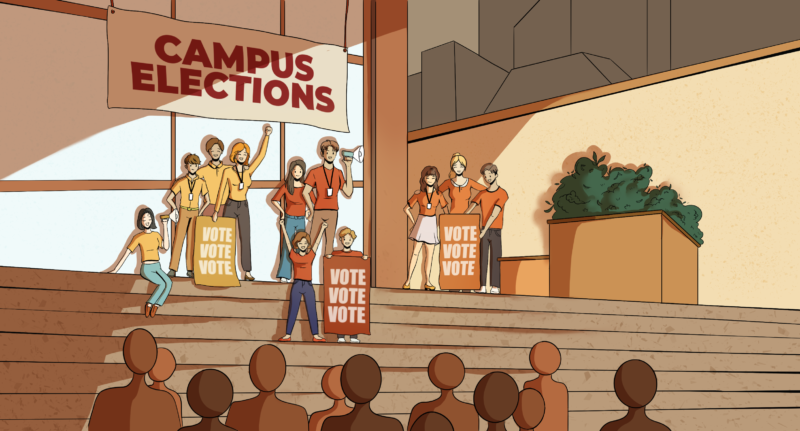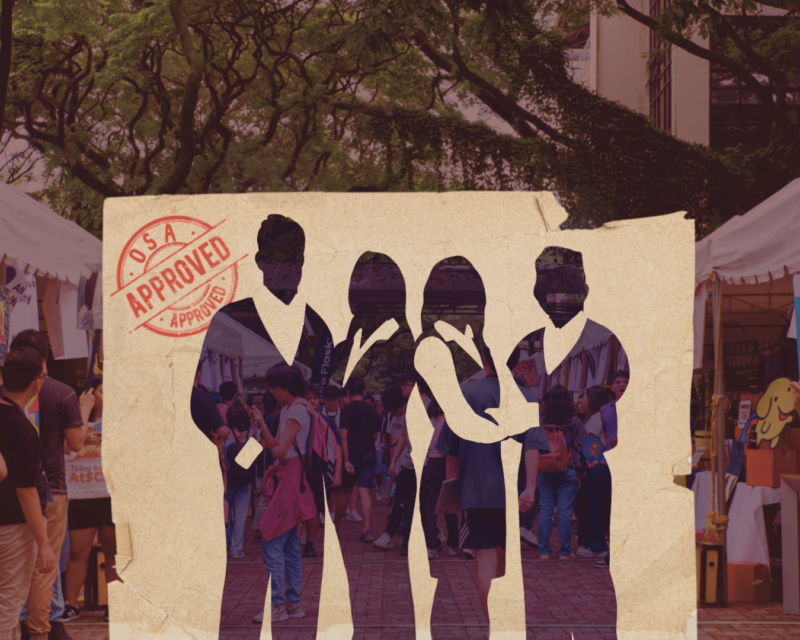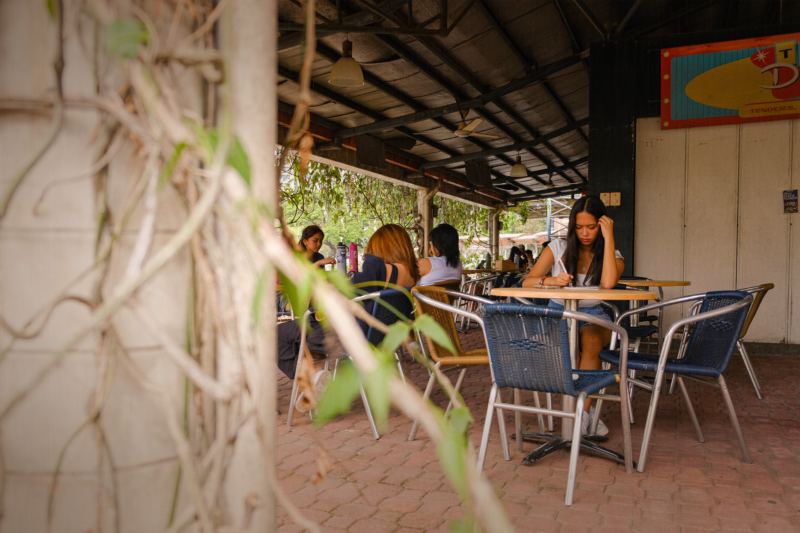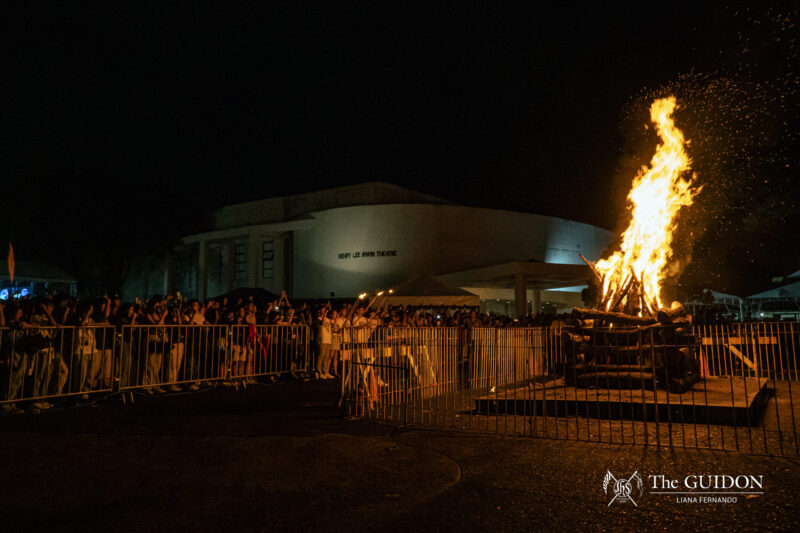ENCOUNTERING CATS on campus has always been a normal occurrence for Ateneans. Situated almost anywhere in the premises, these “Cateneans” have already become an important part of the University’s identity and culture. However, the consecutive incidents of careless drivers running over cats on campus have raised questions about the measures set to ensure animal welfare.
In particular, the reported hit-and-run case of Paopao last September 7 emotionally impacted and stirred many students, staff, and faculty members to rally for thorough investigation. Paopao’s death was not an isolated case, as another cat named Butterscotch died of similar reasons. Consequently, these incidents have prompted apprehensions among various members of the Ateneo community, including Psychology professor Arvin Boller, MA, who has expressed concerns about the state of animal welfare at the University.
A feline’s demise
In this year alone, multiple vehicular accidents involving University cats have already occurred. According to Boller, there have been two more incidents of cats being run over aside from Paopao and Butterscotch, specifically Igor and an unnamed cat in Gate 1. Reports say that the deaths of Butterscotch and Igor were a result of being hit by a car, although the accidents’ exact details and circumstances—including the vehicle’s speed—remain uncertain.
Although Paopao was diagnosed with feline leukemia a few months ago, losing him in a hit-and-run incident left the community with deep sorrow and frustration.
Upon hearing Paopao’s death, Boller’s initial reaction was anger and disappointment. “Galit ako. I was mad. [Since that parking lot] was a faculty area, there is a big chance that [the driver] is a faculty member, and that faculty member should be mindful of how they [drive],” he explains.
Together with Office of Admission and Aid Director Jose Ma. Edito Tirol, PhD, Boller has urged the Campus Safety and Mobility Office (CSMO) to initiate an investigation on Paopao’s death through an email.
Following this, CSMO reports that they were able to identify the concerned vehicle and its driver after checking the campus’ close-circuit televisions (CCTVs). However, Boller says that the office did not disclose the name of the driver but imposed fines already for reckless driving.
For him, these roadkill incidents show the carelessness of some drivers in the Ateneo. He shares that he has observed many cars consistently exceeding the University’s speed limit of 30 kilometers per hour (kph), with some reaching 40 to 50 kph within the campus.
The traffic problem inside the Ateneo may have also contributed to recent vehicular accidents, according to Boller. Viewing traffic management only as a band-aid solution, he stresses that lessening the volume of cars on campus should be one of the University’s utmost priorities.
A feline’s hope
The institution’s persistent mobility issue at present has now concerned the state of animal welfare within the campus. Before the pandemic, the Ateneo had taken concrete actions to protect the stray cat population.
As a way of tracking and managing the safety and health of campus cats, the University came to an agreement in 2015 with the Philippine Animal Welfare Society (PAWS) to control its growing feline population. This led to the creation of the Ateneo Community Cat Program (ACCaP), in collaboration with the Ateneo Institute of Sustainability (AIS), the CSMO, and the Ateneans Guided and Inspired by Our Love for Animals (AGILA).
ACCaP aims to manage the cat population through the Trap-Neuter-Vaccinate-Return (TNVR) method, which captures these felines to neuter them before releasing them back on campus, and a feeding program that assigns designated feeders. Through this program, AGILA has also kept a record of Atenean cats for purposes of ensuring that they are cared for and properly fed.
However, the pandemic led to cases of abandonment and the lack of TNVR implementation, which caused a sudden increase in the population of campus cats. With the abrupt increase, AGILA President Tobiel Guce shared that they decided to conduct adoption drives to keep the cat population within the University’s undisclosed agreed capacity.
For cats that required urgent care, AGILA also hosted fundraisers and adoption campaigns to provide them with necessary health services and a sustainable home and caregiver. Furthermore, the organization released publication materials regarding how individuals should interact with cats, including reminders to avoid feeding or petting them.
With the return of onsite operations, the resurgence in the volume of cars within the campus has also imperiled both cats and people alike. Boller and Guce have witnessed near-miss incidents, whether it may be cars colliding with each other or endangering the lives of innocent pedestrians. For Boller, these instances reveal a deeper issue of mobility and driving within campus grounds.
Unfortunately, many of these incidents remain undocumented. CSMO shares that Paopao’s death is the first roadkill incident that has been “reported” to them, exhibiting the seeming disconnect with the realities happening on University roads. Their current solution in handling heedless drivers is only the issuance of tickets for reckless driving with a fine of PHP 3,000.
Although roadkill cases may be processed by the Office of the Associate Dean for Student Affairs or AGILA, Guce shares the difficulty of pushing for accountability on the driver’s end without any concrete proof. According to him, even judicial proceedings of such cases at present put more weight on intentionality over evidence, which may allow drivers to get away without being sanctioned.
With the occurrence of roadkill incidents within campus grounds, AGILA has collaborated with AIS, the Central Facilities Management Office, and CSMO to put up road signs reminding drivers to slow down whenever near pedestrian crossings. Despite the presence of these signs, the tendency for these to be ignored remains. Thus, stronger reinforcement of traffic regulations is needed to build a safer Ateneo.
Along with building safety along the streets, Guce stresses the importance of collaborative efforts in building a sustainable campus life for both individuals and animals alike.
“We [have] numerous problems [revolving around animal welfare], but [with a] community, [it would be] easier to solve. [We] not only impact those around us but a bigger sphere,” Guce explains.
Following this, CSMO hopes to develop a “comprehensive program to ensure the safety of resident animals on campus.”
A feline’s role
Beyond their mere existence, Cateneans have played a significant role in the Ateneo as they have become companions for the community. “They offer emotional support, so when you lose a pet, it is a profound loss, and anyone who has experienced such a loss understands the depth of the feeling,” Boller shares.
These beloved cats also provide solace to students during extensive academic periods. Thus, the impact of the loss of these cats resonates with the Ateneo community on a larger scale.
This immense grief is heavily felt in Paopao’s demise, especially by those from the Chemistry department who had always experienced the cat’s warm presence. In a Facebook post, the Ateneo Chemistry Society described Paopao as their “emotional support for many years.” The post was accompanied by a photo of his resting place, paying tribute to the cat’s enduring existence in the hearts of many Ateneans.
With this, Boller and Guce both emphasize the responsibility lying on the shoulders of drivers and the administration when it comes to building a safer Ateneo—amplifying the call to becoming effective “stewards of creation.”
Taking pride in its desire to become a Laudato Si’ University, the Ateneo can best fulfill this responsibility through the crafting of improved and extensive mobility policies, alongside mindfulness from drivers, to prevent casualties in the future.While Paopao was already laid to rest, his death sparked the community’s resolute calls for action, ensuring that the roadkill that happened to him would be the last of the cats. Much more can still be done to guarantee the definite safety of every Catenean.







